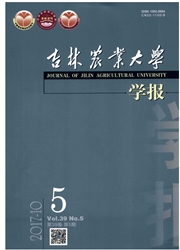

 中文摘要:
中文摘要:
野生动物的栖息地利用及选择是人们了解相对较少的生态过程之一,由于小型林间独栖反刍动物(Small Solitary Forest Ruminant,SSFR)具有相对孤居、行踪隐蔽、警惕性高及栖息地郁闭度较大而难以被目击等特点,对SSFR栖息地利用和选择的研究更加困难.由于栖息地保护是濒危野生动物的保护和种群恢复的最根本途径,野生动物栖息地利用及生境选择成为世界各国生态学家研究的热点和焦点.本文简要概述了小型林间独栖反刍动物的特点,阐述了不同尺度水平的SSFR栖息地选择研究的现状,强调了多尺度研究的必要性,并对栖息地片断化对野生动物的影响作了初步探讨.
 英文摘要:
英文摘要:
Habitat selection is one of the most poorly understood ecological processes. It is difficult to study the habitat selection by the small solitary forest ruminants(SSFR) due to their secretive nature and the relatively closed habitat in which they are found. However, study on their habitat selection has become a hot topic with the development of spatial and computer technology. Characteristics of SSFR and the advances in research of their habitat selection at different scales were summarized. The necessity for multi-scale SSFR habitat selection studies was emphasized, and the consequences of wildlife habitat fragmentation were also discussed.
 同期刊论文项目
同期刊论文项目
 同项目期刊论文
同项目期刊论文
 期刊信息
期刊信息
